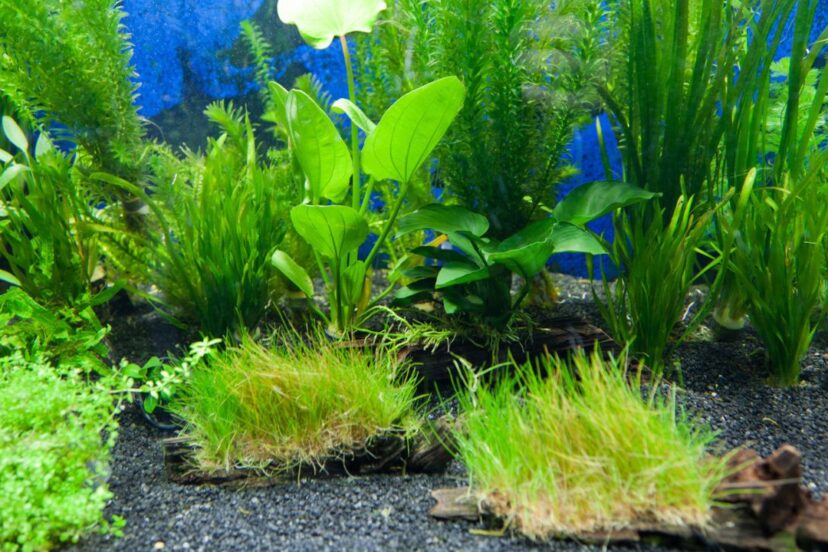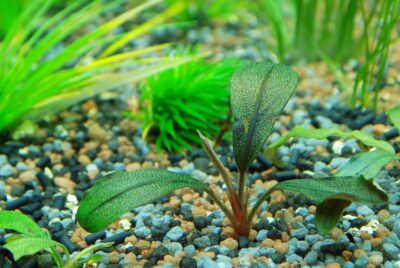Planted Aquarium Lighting
As an avid fish enthusiast and a dedicated advisor in the realm of fishkeeping, I am thrilled to shed some light on the captivating world of planted aquariums. Today, we embark on an illuminating journey into the realm of planted aquarium lighting. So, fasten your seatbelts and let’s dive right in!
Introduction to Planted Aquarium Lighting
The captivating allure of a planted aquarium lies in the vibrant and lush aquatic plants that bring life and natural beauty to our underwater landscapes. However, to unlock the full potential of these aquatic havens, proper lighting plays a pivotal role.
Importance of Proper Lighting
Proper lighting is not merely about aesthetics; it is a key factor in ensuring the health and growth of your aquatic plants. Just like sunlight nourishes plants in nature, suitable lighting mimics this essential natural process, allowing your plants to flourish within the confines of an aquarium.
Understanding the Needs of Planted Aquariums
Before we delve into the world of lighting, it’s essential to grasp the unique needs of our underwater flora. Planted aquariums require specific conditions to thrive, including a nutrient-rich substrate, appropriate CO2 levels, and, of course, adequate lighting.
Factors to Consider for Planted Aquarium Lighting
When selecting the ideal lighting for your planted aquarium, several factors come into play. These factors include the type of lighting, intensity, spectrum, and duration. By understanding each element, you can create the perfect environment for your plants to thrive.
Types of Lighting for Planted Aquariums
When it comes to providing suitable lighting for your planted aquarium, various options are available to cater to the specific needs of your aquatic plants. Each type of lighting offers unique benefits and considerations, allowing you to create the perfect environment for your underwater garden. Let’s explore the most common types of lighting for planted aquariums:
- Fluorescent Lights: Fluorescent lighting has long been a popular choice among aquarists due to its affordability and availability in a range of spectrum options. Compact fluorescent bulbs and T5 fluorescent tubes are commonly used for planted aquariums. They provide a balanced spectrum of light that supports healthy plant growth and vibrant colors. However, fluorescent lights may have lower intensity compared to other options, so careful consideration should be given to the light’s distance from the plants.
- LED Lights: LED (Light Emitting Diode) lighting has gained significant popularity in recent years due to its energy efficiency, longevity, and versatility. LED lights provide a wide range of spectrum options, including customizable settings to mimic natural lighting conditions. They produce intense and focused light, allowing for deep penetration and excellent plant growth. LED lights also offer control over intensity and color, making them ideal for showcasing the vibrant colors of your aquatic plants.
It’s important to consider the specific requirements of your aquatic plants, the size and depth of your aquarium, and your budget when choosing the appropriate lighting type. Additionally, always ensure that the lighting system you select is designed for aquarium use to provide the necessary spectrum, intensity, and longevity for your plants.
Recommended Lighting Intensity
To achieve optimal plant growth, it is crucial to provide the right amount of light intensity. The light intensity required for your aquarium depends on the depth of the tank, the specific plant species, and your desired growth rate. Striking the right balance is essential to avoid stunted growth or excessive algae formation.
Choosing the Right Spectrum
Just as a painter carefully selects their palette of colors, you must choose the appropriate spectrum of light for your planted aquarium. Different spectrums of light, ranging from warm to cool, cater to specific stages of plant growth. It is important to find the right balance to support photosynthesis and overall plant health.
Duration of Lighting
The duration of lighting plays a crucial role in the growth and overall well-being of your aquatic plants in a planted aquarium. It is important to strike the right balance between providing sufficient light for photosynthesis and allowing plants to rest. Let’s delve into the details of optimizing the duration of lighting for your planted aquarium:
- Photosynthesis and Rest Periods: Photosynthesis is the process through which plants convert light energy into chemical energy, fueling their growth. However, plants also require a period of rest to recuperate and perform other essential metabolic processes. Striking the right balance between the two is key to maintaining healthy plant growth.
- Recommended Lighting Duration: On average, a lighting duration of 8 to 10 hours per day is recommended for planted aquariums. This range allows for an adequate photosynthesis period while ensuring that plants have enough time to rest and recover. However, the specific lighting duration may vary depending on factors such as plant species, aquarium size, and the intensity of the lighting system.
- Observing Plant Behavior: It is essential to closely observe the behavior and response of your plants to the lighting schedule. Healthy plants should exhibit steady growth, vibrant colors, and robust foliage. If you notice signs of slow growth, pale leaves, or elongated stems, it may indicate a need for adjustment in lighting duration or intensity.
By carefully considering the duration of lighting in your planted aquarium, you can ensure that your aquatic plants receive the optimal amount of light for photosynthesis while allowing them sufficient rest periods. Striking the right balance supports healthy growth, vibrant colors, and overall plant well-being, creating a visually stunning and thriving planted aquarium.
Avoiding Common Lighting Mistakes
To ensure the healthy growth of aquatic plants in a planted aquarium, it’s crucial to avoid common lighting mistakes that can hinder their development and lead to issues like algae overgrowth. Here’s a concise summary of these mistakes and how to prevent them:
- Insufficient Lighting: Inadequate lighting limits photosynthesis and stunts plant growth. Research the light requirements of your plant species and choose a lighting system that provides the appropriate intensity for their needs.
- Improper Placement: Placing lights too high or too close to the water surface causes uneven light distribution. Follow manufacturer guidelines for the optimal distance and use adjustable brackets or hanging kits to position lights correctly.
- Neglecting Light Duration: Inconsistent lighting duration disrupts plant growth. Establish a schedule of 8 to 10 hours per day using a timer for automation.
- Ignoring the Spectrum: Different plant species have varying light wavelength requirements. Choose customizable lighting systems or bulbs designed for planted aquariums to provide the optimal spectrum.
- Inconsistent Lighting Intensity: Sudden changes in light intensity stress plants. Gradually acclimate them to changes over several days.
- Lack of Maintenance: Regularly clean light fixtures and replace bulbs as recommended by the manufacturer to maintain optimal performance.
By avoiding these mistakes, you create an environment that fosters healthy plant growth and a visually captivating planted aquarium.
Additional Tips for Optimal Plant Growth
To ensure the best possible growth and health of your aquatic plants in a planted aquarium, consider the following tips:
- Fertilization: Provide essential nutrients through high-quality fertilizers or substrates containing macronutrients and micronutrients.
- CO2 Injection: Supplement naturally available carbon dioxide with a CO2 injection system to enhance plant growth.
- Water Quality: Test and maintain proper water parameters, perform regular water changes, and ensure a clean and healthy environment for your plants.
- Pruning and Maintenance: Regularly prune plants, remove decaying leaves, and keep the substrate free from debris to maintain a healthy and aesthetically pleasing aquarium.
- Balance Light and Nutrients: Adjust lighting intensity and duration according to your plant species’ needs, and monitor and adjust nutrient levels to prevent imbalances.
- Monitor and Control Algae: Maintain a consistent lighting schedule, prevent nutrient imbalances, manually remove visible algae, and consider introducing algae-eating organisms to control algae growth.
- Consider Aquascaping: Plan the layout and arrangement of plants, rocks, driftwood, and substrate to create visually appealing and functional aquascapes that suit the growth habits and lighting requirements of your plant species.
By implementing these additional tips, you can create an ideal environment for your aquatic plants to thrive, resulting in a vibrant and captivating planted aquarium.
Conclusion – (Planted Aquarium Lighting)
Planted aquarium lighting serves as the beacon that guides your aquatic plants towards unparalleled growth and beauty. By understanding the unique needs of your plants and making informed lighting choices, you can create an underwater paradise that showcases the mesmerizing synergy of aquatic flora and fauna.
FAQ – (Planted Aquarium Lighting)
Q. How many hours of light do planted aquariums need?
A. Planted aquariums typically require 8 to 10 hours of light per day to ensure adequate photosynthesis and growth. Adjust the lighting duration based on the specific needs of your plant species and monitor their response for optimal growth.
Q. Can I use regular household bulbs for my planted aquarium?
A. Regular household bulbs are unsuitable for planted aquariums due to insufficient spectrum and intensity for optimal plant growth. It is recommended to invest in specialized aquarium lighting options that cater specifically to the needs of aquatic plants.
Q. How does lighting affect algae growth in planted aquariums?
A. Lighting plays a significant role in algae growth in planted aquariums. Excessive lighting or prolonged exposure can trigger algae overgrowth.
Q. Can I mix different types of lighting in my planted aquarium?
A. Yes, it is possible to mix different types of lighting in your planted aquarium. Consult lighting experts or experienced aquarists for specific recommendations based on your setup.
Q. Is it necessary to use a timer for the lighting in a planted aquarium?
A. Using a timer for your aquarium lighting is highly recommended. It helps maintain consistency in the lighting schedule, ensuring your plants receive the required duration of light each day.




